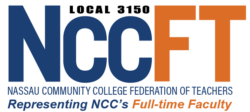SUNY Chancellor Nancy Zimpher’s idea of “systemness,” especially as she defined it in her 2012 State of the University address, sounds good in theory. “Systemness,” she said, “is the coordination of multiple components [within a system] that, when working together, create a network of activity that is more powerful than any action of individual parts on their own.” Indeed, if a September 2012 SUNY press release can be believed—and we have no reason to think it can’t—“systemness” may already have borne fruit that is a good deal more than theoretical. The “shared services” initiative, which began in August 2011 charges SUNY campuses with “work[ing] to identify and eliminate duplicative administrative services and to collaborate on business, finance, and procurement operations.” According to SUNY, this process has enabled the redirection of more than $6 million to student services and resulted in more than thirty full-time faculty hires. Assuming that no one has actually lost a job as a result of this administrative consolidation, who would not applaud those numbers?
The problem is that when “systemness” is applied to the academic services SUNY offers, it becomes a one-size-fits-all solution, mandating a kind of homogeneity across SUNY’s thirty community colleges—rural, urban, and suburban—that would appear to contravene our mission. Recognizing the role of a community college in “serv[ing] the needs of the community” where the college is located (NYS Education Law, Article 126, Section 6301), SUNY made it clear in Section 601.6 of the Community College Regulations that a community college education should be flexible enough to serve a wide range of students, offering them “sufficient time to explore appropriate career goals,” while also permitting them to “change [their] chosen field of study” if they so desire. Moreover, a community college education should provide “appropriate instruction” to those students whose “basic educational skills need improvement,” and it should make “provisions for [both] individualized instruction [and] ‘nontraditional’ learning resources.” All of this, the regulations stipulate, is in the interests of giving students academic choices that should include “developmental studies, certificate and diploma students, and associate-degree studies, either transfer or college” (Community College Regulations, Part 600, 7-8).
“Systemness” threatens this flexibility and inclusiveness not just because SUNY Seamless will almost certainly create a cookie-cutter educational paradigm that will be imposed throughout SUNY from the top down. “Systemness” itself is part of a national trend in which corporate and other well-funded groups work to take curriculum design and content out of the hands of local educators so that public education can be redefined as job training, and in which teaching is being reimagined as “content delivery,” reducing teachers to technicians whose primary role is to operate and manage “content-delivery systems.” So, for example, as Acting President Saunders discussed at last year’s General Faculty meeting, SUNY plans to measure our campus’ performance using a so-called “Campus Report Card.” This report card, however, will not be designed by us—the people who know this campus, know our students, and understand the educational mission and vision of the institution—but by an outside agency. Not only are those who have seen the report card concerned that it does not adequately reflect our campus’ achievements. They worry that, if it becomes part of the performance-based funding scheme that we know SUNY and Governor Cuomo’s office are preparing—based in part on whether or not students get jobs when they leave here–we will, to the detriment of our students and their communities, lose any voice we might have had in how our work as a campus should be evaluated and therefore over what and how we teach. (SUNY, in collaboration with the governor’s office, has already tried to impose this scheme once. NYSUT was able to lobby against the proposal at that time, but we have no doubt that we will see this proposal again.)
It is, of course, possible to treat “systemness” as, actually, less than the sum of its parts: to applaud the benefits of “shared services,” for example, while tweaking SUNY Seamless and treating both as if they were actually two separate and unrelated initiatives. The problem with that sort of complacency, however, is that it fails to connect “systemness” at SUNY to the “systemness” that is at least implicit in the anti-teacher, anti-intellectual, pro-business, and anti-union educational reform that is being pushed throughout the country. That is a complacency we cannot afford and it is one to which the NCCFT refuses to surrender.
